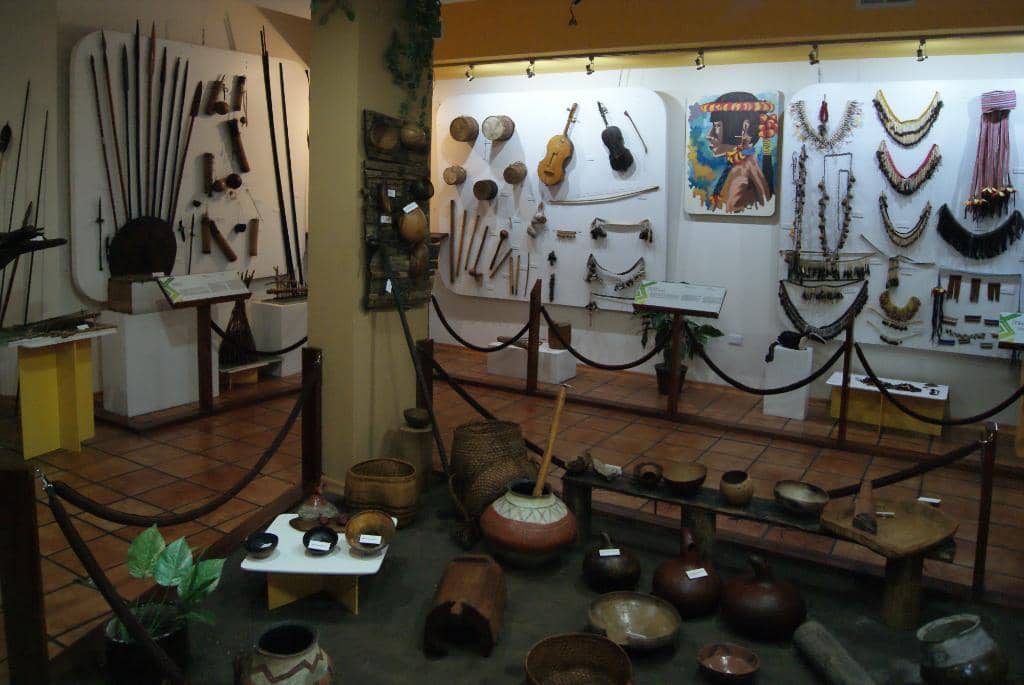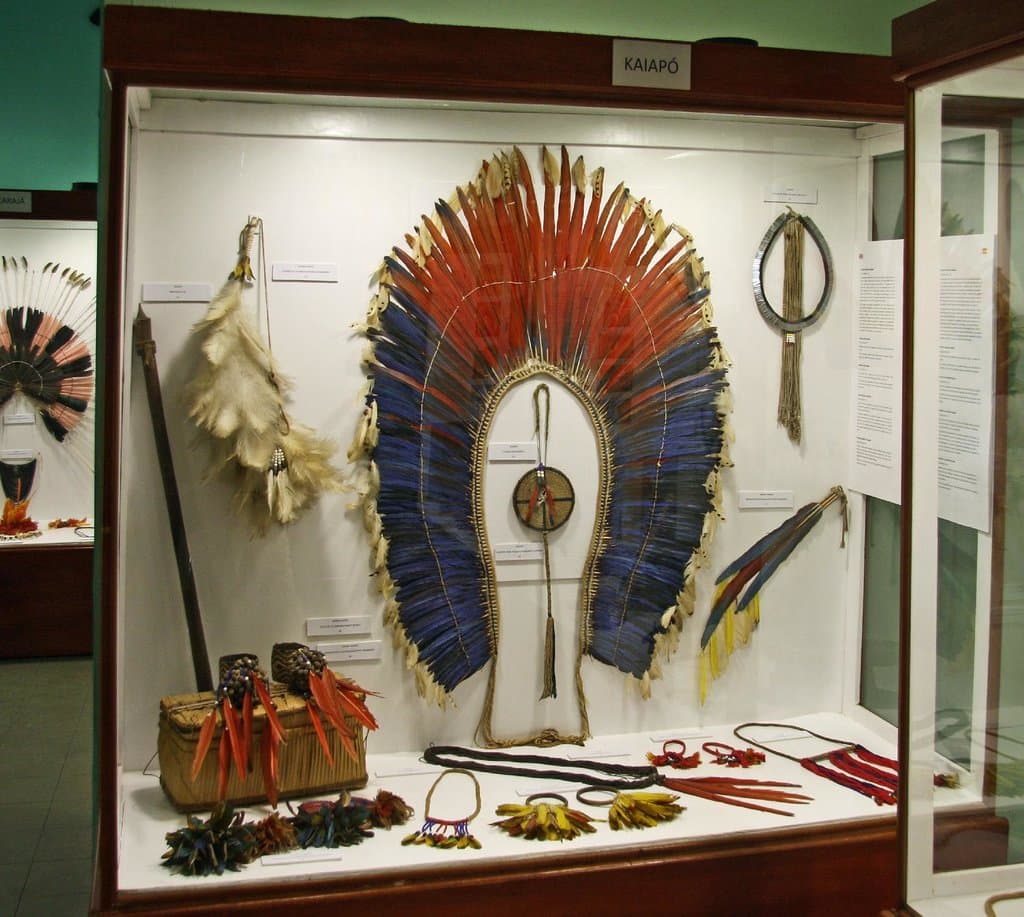
Museo Amazónico
Discover Amazonian culture through vibrant statues, indigenous art, and historical exhibits in Iquitos.

Highlights
Must-see attractions

Social
From TikTok & Reddit
Best Time
Beat the heat and crowds

Museo Amazónico
Best Time
Beat the heat and crowds

Highlights
Must-see attractions
Discover Amazonian culture through vibrant statues, indigenous art, and historical exhibits in Iquitos.
"Beautiful building housing art and history from indigenous peoples."

🤝 Hire a Local Guide
Unofficial guides offer great insights for a tip. Essential for understanding exhibits, especially if you don't speak Spanish.
🎨 Appreciate the Art
The colorful paintings and unique fiberglass statues are highlights. Look for contemporary indigenous art too.

Highlights
Discover the most iconic attractions and experiences
Fiberglass Sculptures
Main exhibition hall
Vibrant fiberglass statues depicting Amazonian ethnic groups in traditional attire and adornments.
Indigenous Art Exhibit
Special exhibition area
Contemporary art inspired by nature and Amazonian traditions, often with Ayahuasca-like themes.
Rubber Exploitation History
Historical section
A poignant depiction of the harsh realities of early rubber extraction in the Amazon.
Plans like a pro.
Thinks like you
Planning Your Visit
Timing is Key for the Amazon Museum
Embrace the Local Culture
Best Times
Insider Tips
from TikTok, Instagram & Reddit
🤝 Hire a Local Guide
Unofficial guides offer great insights for a tip. Essential for understanding exhibits, especially if you don't speak Spanish.
🎨 Appreciate the Art
The colorful paintings and unique fiberglass statues are highlights. Look for contemporary indigenous art too.
📜 Spanish Descriptions
Most information is in Spanish. A guide is highly recommended for full comprehension.
💰 Tip Your Guide
Guides are not official but knowledgeable. A tip is expected for their service and insights.
Tips
from all over the internet
🤝 Hire a Local Guide
Unofficial guides offer great insights for a tip. Essential for understanding exhibits, especially if you don't speak Spanish.
🎨 Appreciate the Art
The colorful paintings and unique fiberglass statues are highlights. Look for contemporary indigenous art too.
📜 Spanish Descriptions
Most information is in Spanish. A guide is highly recommended for full comprehension.
💰 Tip Your Guide
Guides are not official but knowledgeable. A tip is expected for their service and insights.
📸 Capture the Colors
The vibrant displays, especially the statues and masks, make for great photo opportunities.
What Travellers Say
Reviews Summary
Visitors find the Museo Amazónico to be a small but interesting exposition, particularly appreciating the vibrant fiberglass statues and contemporary indigenous art. While information is primarily in Spanish, hiring an unofficial guide is highly recommended for deeper understanding and is a common practice. The exhibit on rubber exploitation offers a poignant historical perspective.
"statues and colorful paintings are the standouts"
GGS Me
"This isn't really a museum. There are some sculptures but nothing labeling them or talking about them. There are folks that can serve as guides. They're not official guides, so they expect a tip at the end of their tours. There was a pretty cool local art exhibit with "nature" pieces that looked ayahuasca-inspired"
Jaxon Rickel
"Beautiful building housing art and history from indigenous peoples."
Peggy Hawman
What People Like
What People Dislike
Frequently Asked Questions
🚇 🗺️ Getting There
The Museo Amazónico is centrally located in Iquitos, often accessible by a short taxi or mototaxi ride from the main square or Malecón Tarapacá. Many travelers find it easy to reach on foot if staying in the city center.
There are mentions of an 'Museo Etnográfico Amazónico José Pío Aza' in Lima, but the primary Museo Amazónico discussed in travel content is located in Iquitos, Peru.
Mototaxis are a popular and affordable way to get around Iquitos. For longer distances or specific tours, consider booking with a local agency.
Yes, the Museo Amazónico is generally considered to be in the city center of Iquitos, making it relatively close to the Malecón Tarapacá, a popular waterfront promenade.
Yes, the distance from the Plaza de Armas to the Museo Amazónico is walkable for most visitors, offering a chance to see more of the city.
🎫 🎫 Tickets & Entry
While specific prices aren't always listed, some sources indicate that certain attractions in Iquitos, including the Museo Amazónico, can be free or have a nominal entrance fee. It's always best to check on arrival.
Advance booking is generally not required for the Museo Amazónico. It's usually a walk-in attraction, though checking local listings or tour operator sites might provide more current information.
Opening hours can vary. It's advisable to check locally or with your accommodation upon arrival in Iquitos, as they are not consistently published online. Mornings are often recommended to avoid crowds.
Some reviews suggest it's a small exposition, and while not always explicitly stated as free, it's often considered an affordable or even free attraction.
Discounts are not typically advertised. However, engaging with local guides for a tip-based service is a common practice that enhances the visit.
🎫 🧭 Onsite Experience
The museum features a collection of fiberglass statues representing Amazonian ethnic groups, indigenous art, and exhibits on the history of rubber exploitation.
Yes, unofficial guides are often available at the entrance. They provide valuable context for the exhibits, especially for those who don't speak Spanish.
Primarily, the information and labels at the Museo Amazónico are in Spanish. Hiring a guide is highly recommended for a comprehensive understanding.
The colorful statues and art might appeal to children, but the historical exhibits on rubber exploitation could be sensitive. A guide can help tailor the experience.
A visit to the Museo Amazónico can take anywhere from 30 minutes to an hour, depending on your interest level and whether you opt for a guided tour.
📸 📸 Photography
Photography is generally permitted inside the Museo Amazónico, especially for the colorful statues and art. However, it's always good practice to check for any specific signage or ask staff.
The vibrant fiberglass statues of indigenous people and the contemporary indigenous art pieces offer excellent photographic opportunities.
While not explicitly stated, avoid using flash photography that might disturb other visitors or damage delicate exhibits. Focus on capturing the essence of the displays.
Drone usage is typically restricted in urban areas and around cultural sites. It's best to avoid flying drones near the museum to comply with local regulations.
A standard digital camera or smartphone with good low-light capabilities will suffice. The exhibits are well-lit, and the vibrant colors will pop with most devices.
For Different Travelers
Tailored advice for your travel style
👨👩👧 Families with Kids
💰 Budget Travelers
Deep Dives
In-depth insights and expert knowledge
The Significance of the Museo Amazónico
Furthermore, the museum plays a crucial role in educating visitors about the region's history, including the often-harsh realities of its past. An exhibit detailing the horrors of early rubber exploitation offers a somber yet important perspective on the economic and social impacts on indigenous populations. While many informational texts are in Spanish, the visual nature of the exhibits, especially when accompanied by a knowledgeable local guide, makes the museum an accessible and enriching experience for understanding Amazonian culture and history.
Navigating the Museo Amazónico Experience
The museum's collection is described as an 'exposition' rather than an extensive museum, with standout features including the colorful statues and paintings. The contemporary indigenous art exhibit, with its nature-inspired and sometimes Ayahuasca-themed pieces, is particularly noted as a highlight. While the historical exhibit on rubber exploitation is impactful, it's important to be aware that information is primarily in Spanish. Overall, the Museo Amazónico offers a concentrated yet insightful look into the Amazon's cultural tapestry.



Social
from TikTok, Instagram & Reddit